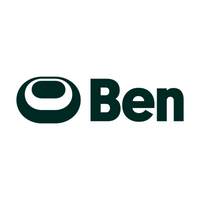Four ways employee benefits platforms are making admin easier
Attracting and retaining top talent remains a challenge in today’s competitive job market.
A pivotal element in this challenge is the benefits package offered by employers.
But many HR teams encounter significant challenges in managing these benefits effectively, and end up diminishing the potential advantages for both employees and employers.
In a digital era where 89% of employers emphasise the need for efficient benefits data analysis, manual processes persist, with 76% of employers still manually sifting through benefits data.
This reveals a significant gap between technological potential and practice, suggesting an urgent need for evolution in benefits administration.
Enter benefits platforms. Benefits platforms are designed to alleviate the administrative burden associated with managing employee benefits.
These systems introduce automation and integration capabilities that significantly reduce time spent on routine tasks. By seamlessly connecting Human Resources Information Systems (HRIS), payroll, and accounting platforms, operational efficiencies are greatly increased.
1. Streamlining benefits reporting
Benefits platforms help simplify and streamline the process of reporting.
Between global payroll reports and reporting transactions summaries, employers can quickly itemise benefit deductions and wallet top-ups monthly, as well as get a clear overview of all reportable transactions, including reimbursements, settled purchases and refunds.
Intuitive filters allow easy navigation through data by month, year, username, or benefit, enabling HR professionals to extract relevant information efficiently without use of cumbersome spreadsheets.
2. Tracking engagement
Tracking benefits engagement is also streamlined through these platforms. According to Ben’s Benefits Benchmarking Survey, 73% of people teams don’t measure engagement.
But with more and more employers seeking improved data analysis to enhance benefits engagement and improve the Employee Value Proposition (EVP), benefits platforms offer a comprehensive dashboard that provides an overview of employee engagement with benefits. This feature aids in developing benefits packages that are truly responsive to employee needs.
The integration of advanced analytics tools within these platforms also means administrators can better predict trends and adapt strategies swiftly, ensuring that benefits programmes remain aligned with employee needs and industry standards.
3. Simplifying communication with providers
Communication with benefit providers, particularly about sensitive offerings such as private medical and life insurance, is often complex. Benefits platforms simplify these interactions, ensuring that such critical benefits are managed with care and precision, providing peace of mind to employees.
4. Flexible, self-serve benefits
The necessity for flexible, self-serve benefits options is clear. Employee needs vary significantly, and a one-size-fits-all approach can lead to low employee engagement and dissatisfaction. Benefits platforms that offer customisable, self-serve options empower employees to select benefits most relevant to their specific circumstances. This adaptability is crucial for maintaining a competitive edge in securing and retaining skilled workers.
In conclusion, as the workplace continues to evolve, so too must the tools we use to manage and offer employee benefits.
The future of benefits administration lies in using technology to reduce inefficiencies, improve engagement and, ultimately, create a more satisfied and productive team.
Supplied by REBA Associate Member, Ben
Get benefits that get your people. Switch to Ben for flexible, global, automated employee benefits.








